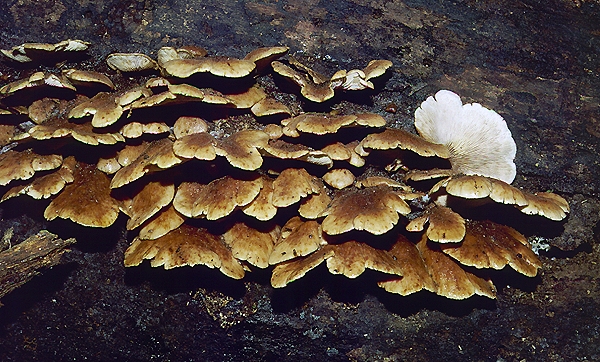
Lentinellus ursinus (Fr.) Khner

Common name: None.
Description: The fruiting bodies may be fan-shaped, like a broad spatula or bracket-shaped and may be up to 8 cm broad. They are convex on their upper surface but may become more or less plane with age; the surface is smooth to finely velvety over the bracket margins but becomes very woolly or hairy towards the point of attachment to the log on which it is growing. The surface colour is fawn to dark brown. The gills radiate out from the point of attachment and are light brown; the edges are always serrate. There is no stem, the fruiting bodies being attached directly to the wood.
The spores measure 35 × 24 µm, are very broadly ellipsoidal to subglobose, finely echinulate and are colourless but white in mass.
Substratum: This species is always found on wood, usually logs in tropical and subtropical rainforest and in dense, gregarious, tiered colonies so that the wood can be totally hidden by the masses of caps.
Distribution: Known from Queensland, New South Wales and Victoria.
Notes: This species seems very common in moist, shaded locations. Another member of this genus, Lentinellus flabelliformis has also been found in both New South Wales and Western Australia. It is not confined to rainforests and occurs in bark crevices of eucalypts in dry woodland.
